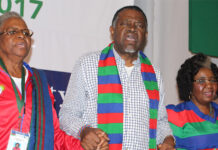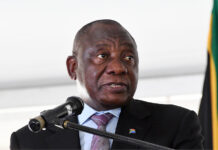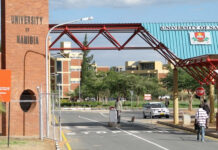By Marion Guégan, Cécile Schilis-Gallego | 20 June 2019
The “Green Blood” series pursued the investigations of several reporters who faced threats when covering possible environmental damage and other abuses by mining companies. Reporting on environmental issues can cost journalists their jobs, the land they live on and even their lives. The more journalists cover these issues aggressively, the more they areprovoking powerful interests that will retaliate and block access to information.
This is particularly true of the mining industry. For the first time, 40 journalists from 15 countriesorganized by Forbidden Stories were able to go into the field, track supply chains and useopen source tools to look into mines in India, Tanzania and Guatemala that once tried tocover up their activities.
Indian reporter Jagendra Singh posted his last contribution to his Facebook page – where he regularly published his reporting – on June 1, 2015. He had been posting for over a month about local politician Rammurti Singh Verma and his alleged ties to illegal sand mining, which the United Nations has identified as a major environmental threat. That day, Singh was brought to the hospital with burns over 50 percent of his body.
“The motherfuckers poured petrol on me. They jumped over the wall and got in. If they wanted to, they could have arrested me instead. What was the need to kill me?” said Singh in a video before he died from his injuries.
With his eyes closed and unable even to look into the camera, he accused police officers and supporters of Verma of setting him on fire. In the video, one can see his devastating burns. He died from his injuries seven days later. He was 46 years old.
Official reports claim that Singh killed himself. Yet, the day of his father’s funeral, Singh’s son filed a complaint against Verma and five policemen for conspiracy to kill and immolation. He later withdrew his complaint after interactions between Verma and the family. Forbidden Stories met with several members of the Singh family who – after being afraid of retaliation for years – now say they accepted money from Verma in exchange for their silence.
A spokesperson for Verma said he was unable to respond because he was hospitalized.
Singh is one of four Indian journalists who have allegedly been killed reporting on the sand mafias, which are among the most prominent, violent and impenetrable organized crime groups in India.
Since 2009, at least 13 journalists have been killed globally after working on environment-related stories, according to the Committee to Protect Journalists. There maybe as many as 29 cases. CPJ is still investigating 16 additional deaths.
Back in 2015, Reporters without Borders already noted a “steady deterioration in the situation for environmental reporters.
”Forbidden Stories – a consortium of 40 journalists publishing in 30 media organizations – found that environment-related stories can lead to serious push-back for local journalists. In the worst cases, journalists are killed. In other cases, a number of journalists have been arrested, censored, sued, harassed and threatened, if not attacked.
“Most of the journalists facing those difficulties are operating in Latin America, Asia and Africa,” according to Eric Freedman, a professor at Michigan State University who wrote a paper on “the perils of environmental journalism.”
“The issues often take place in remote areas.
”In Tanzania, journalists have struggled to report on the impact of a gold mine – owned by Acacia Mining, whose majority shareholder is Canadian giant Barrick – in the North Mararegion. Forbidden Stories found a dozen journalists – foreign and local – who have been arrested, threatened or censored by Tanzanian authorities, for reporting on the mine.
Even getting close to the mine – more than a thousand kilometers from Dar es Salaam, the biggest Tanzanian city – is often dangerous. In 2011, four journalists were brought to a police station after being arrested while they were on their way to report on deaths in the vicinity of the North Mara gold mine.
Forbidden Stories traced the gold from the North Mara mine all the way to the MMTC-PAMP refinery in India, which prominent tech companies such as Apple, Canon, and Nokia that promote themselves as ethical and environmentally friendly – as well as more than 500 other companies – list the company as one of their suppliers in documents filed with a U.S.regulatory agency. The Tanzanian gold could thus end up in coveted high-tech phones and computers.
“During our due diligence performed on North Mara, we took the NGO’s reports very seriously and challenged the mine on the issues raised,” said Hitesh Kalia, a risk and compliance officer at MMTC-PAMP. Canon and Nokia both highlighted that the Indian refiner had previously been audited and found conformant. “If allegations are confirmed, this smelter will be red flagged and we will ask our supply chain to divert business from this smelter,” said a Nokia spokesperson. Apple shared a similar statement.
Yet, around the mine, villagers have had to live for decades with the environmental consequences of gold mining. In place of artisanal mining, Acacia and its predecessors developed industrial mining, with even higher quantities of by-products such as heavy metals, which were later found at high levels in the water nearby. In May, authorities fined the company 5.6 billion Tanzanian shillings ($2.4 million U.S. dollars) for alleged pollutionfrom North Mara’s tailings dam.
Acacia Mining told Forbidden Stories that it “has already recognized the need for additional tailings management” and that it “has commenced planning and design for a new tailing storage facility.”
Environmental offenses aren’t the only ones that the mining company has been accused of. Nongovernmental organizations have documented 22 alleged killings by the police or mine security workers since 2014, as well as numerous beatings and rapes. The victims? For themost part miners who formerly worked on a smaller scale where the mine now stands. Theyare called “intruders” by the company.
In a statement, Acacia Mining said it had consistently refuted various allegations from NGOs regarding unlawful deaths and human rights issues.“In the four years between 2014 and 2017 six people are reported to have lost their lives on the North Mara mine site as a result of confrontations with members of the local police,” they added. A Barrick spokesperson said that, as a shareholder, the Canadian miner does not exercise operational control over North Mara.
Forbidden Stories, along with a reporter from the Guardian (United Kingdom), met Lucia Marembela, a 44 year-old woman who says she was raped twice in 2010 at the site. Marembela was caught by men while she was looking for gold from the mine, a fate she says is common for women in the area.
“When we were tired of running, they would end up catching us and bringing us with them,” she says. “They would throw us in their vehicle and take us to an isolated place, near a small airfield, far from the view of passersby.” She says one man would then rape them, while the others were on the lookout. “Once they’ve finished their dirty work, they let you go, get in their vehicle and go back to work,” she said.
With the privatization of the Tanzanian mining industry, North Mara villagers lost their former primary source of revenue: artisanal mining. “The company’s acquisition of their land destabilized their livelihoods, and this company did not compensate them adequately,” said Mary Rutenge, a lecturer at Mzumbe University in Tanzania.
“In emerging economies where people depend on natural resources and those natural resources are very valuable to industry or to the government, that can become a very dangerous situation for journalists who are covering their extraction,” according to Meaghan Parker, executive director of the Society of Environmental Journalists.
Especially since it can sometimes be difficult for environmental journalists working in remote areas to be recognized as such by authorities. “The line between activists and journalists can be very blurry,” said Parker. “The activists protesting and the journalists covering are both at risk.”
This is what happened to reporter Carlos Choc, a member of a Guatemalan Maya Q’eqchi community in El Estor, who was working on a year long project investigating the environmental and social impact of a local ferronickel mine. On May 27, 2017, a group of fishermen organized a blockade protesting both against authorities – which they felt had abandoned them – and the mine, owned by the Swiss-incorporated group Solway, which they accused of contaminating Lake Izabal, their main source of livelihood.
When the fishermen started to throw rocks, policemen answered with bullets. An hour and a half later, a fisherman lay bleeding and dead on the ground, shot by a policeman in the chest. Carlos Choc, who captured the scene with his camera, was soon charged with “threats,” “incitement to commit crimes” and “illicit association.”
“The nickel company, through its workers, was saying things like I carried a firearm, I carried a machete, I carried a stick, and I was the one who led the group,” said Choc. “To which I repeat, I have never carried a firearm in the first place. My job is to bring a camera, or just a tape recorder, my cell phone and my notebook. That’s all I’m carrying, I’m not carrying anything else.”
Journalists coordinated by Forbidden Stories found reasons to challenge the company and Guatemalan authorities’ assessment of the mine’s impact on the environment. A mine spokesperson denied the processing plant ever emitted red fumes at night, despite photographic evidence to the contrary. As for the contamination of the lake, we found experts who question the authorities’ conclusions. “Comparing the levels of nickel found in the lake next to the mine and the plant for processing its ore against those levels found further away there is quite strong evidence that the mine and the plant are contaminating the lake,” said Portuguese biologist Eduardo Limbert.
The parent company Solway said the levels or pollution had not changed since the plant’s operation started.
While authorities were pursuing criminal charges against him, Choc had to live clandestinely for over a year, away from his children. The situation overtook his entire life. After hearing that a colleague of his had been arrested on the same charges, he decided to hide from authorities until he was scheduled to see a judge.
Choc was finally able to see a judge in January and succeeded in avoiding pretrial detention. He is now awaiting a hearing on his case.
Confronted with our findings, José Felipe Baquiax, a judge who presides over the criminal chamber of the Guatemalan Court, told journalists from Expresso (Portugal) and Le Monde (France) that he would open an investigation into local judge Édgar Aníbal Arteaga López – in charge of the prosecution against both the fishermen and Carlos Choc.
“Freedom of expression is included in the Constitution, so this does not constitute a crime,”Baquiax underlined.
“When journalists are reporting on environmental issues, they are often reporting on companies or corrupt actors who are in complete alliance with the government,” said Bruce Shapiro, director of Columbia University’s Graduate School of Journalism’s Dart Center for Journalism and Trauma. “This means that their enemies become some of the most dangerous people in the world, and I’m hard put to think of a category of investigative reporters who are routinely dealing with more dangerous actors than environmenta ljournalists.“
This often means confronting powerful organizations. In the south of India, local sand-mining businessman S. Vaikundarajan heads an empire founded by his father in 1989. Its main company, V.V. Mineral, extracts more sand than is officially allowed and in locations where mining is not permitted, according to state authorities.
“About, say, 85 to 90 % of beach sand mining, legal and illegal, is monopolized by this one family” said Sandhya Ravishankar, a 37-year-old journalist working from Tamil Nadu, an Indian state eaten away by illegal sand mining.
In Tamil Nadu, illegal sand mining has been rampant since the 2000s. In 2013, state authorities finally decided to take action. A ban on mining was declared while inspections into potentially illegal activities of private miners were opened. Yet, between 2013 and 2016, miners continued to export more than two million metric tons of minerals internationally, according to an expert report submitted to the Madras High Court.
In a lengthy written reply, V.V. Mineral explains that it has lodged an appeal against this sand mining ban. The company considers that it has never acted illegally and disputes any pressure or threat on anyone.
In a report published in May, the UN Environment Programme underlined the environmental and social impacts of sand extraction – both from rivers and beaches – saying it is an issue of global significance. “Indications are that we are approaching a future where access to this resource is a critical barrier to sustainability, and the full costs of uncontrolled sand extraction come due,” it stressed.
“We are the only company operating with valid environmental clearance… so the environmental degradation is an imaginary story spread with ulterior motive,” said V.V.Mineral’s spokesperson who blamed erosion on global warming.
Ravishankar started reporting on illegal beach sand mining in 2013. As soon as her first story appeared, she was reminded of the sensitivity of the subject: “The day we published it,within an hour or two, we had a defamation suit slapped on the newspaper, and I was included in the names of the accused.” The Chennai-based journalist then wrote a series of six more articles. No one wanted to publish her reporting.
Finally in January 2017, the Indian non-profit news website The Wire published the results of her investigation. The journalist says she started receiving threatening phone calls, was followed, and had video surveillance footage of her meeting a source posted on the internet.
“Sandhya Ravishankar has personal enmity against our company,” said Vaikundarajan’s spokesperson in a statement criticizing at length the journalist whom he said works for one of his competitors.
Ravishankar has not travelled back to the region since 2015 out of fear for her safety.
“There is a real chilling effect from the attacks,” said Saul Elbein, a freelancer who has written about the murder of environmental journalists, for the Pulitzer Center. “As more and more of the world lurches toward environmental crisis, there is less and less meaningful reporting coming out of the rural places where environmental crime happens.
The lights, in other words, are going out, just as they’re most needed.”






